For those entrenched in the moto world eyeing the electric mountain bike scene, the Gas Gas ECC6 e-bike is turning heads. This striking red machine isn’t just visually appealing; it’s engineered with a dirt bike pedigree that resonates with riders seeking robust performance on challenging terrains. Mountain bikers, don’t dismiss this as another moto brand foray into eMTBs. Gas Gas has meticulously crafted the ECC6, incorporating high-caliber components and a well-thought-out frame, positioning it as a serious contender in the electric mountain bike arena.
Before we delve into the trail experience, let’s cover some crucial details. The ECC6 is built to conquer enduro trails, equipped with top-tier components and Sram’s advanced Powertrain drive system. It features a 630Wh swappable battery, although accessing it requires navigating a slightly cumbersome cover. The suspension is a collaborative effort between DVO and WP, the latter being a name synonymous with performance in the dirt bike community, sparking considerable interest among riders familiar with moto suspension technology. This setup combines DVO’s expertise with WP’s innovative cone valve technology. With these details in mind, let’s jump into the ride experience.
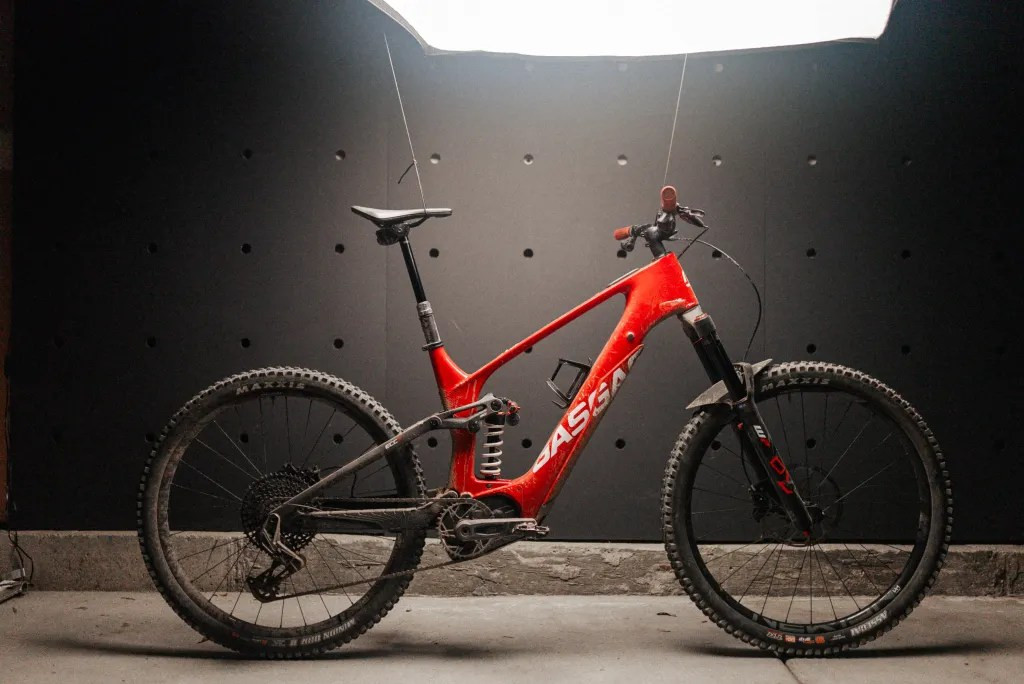 Gas Gas ECC6 e-bike in red color showcasing its enduro mountain bike design
Gas Gas ECC6 e-bike in red color showcasing its enduro mountain bike design
 Side view of the Gas Gas ECC6 e-bike emphasizing its frame geometry and component integration
Side view of the Gas Gas ECC6 e-bike emphasizing its frame geometry and component integration
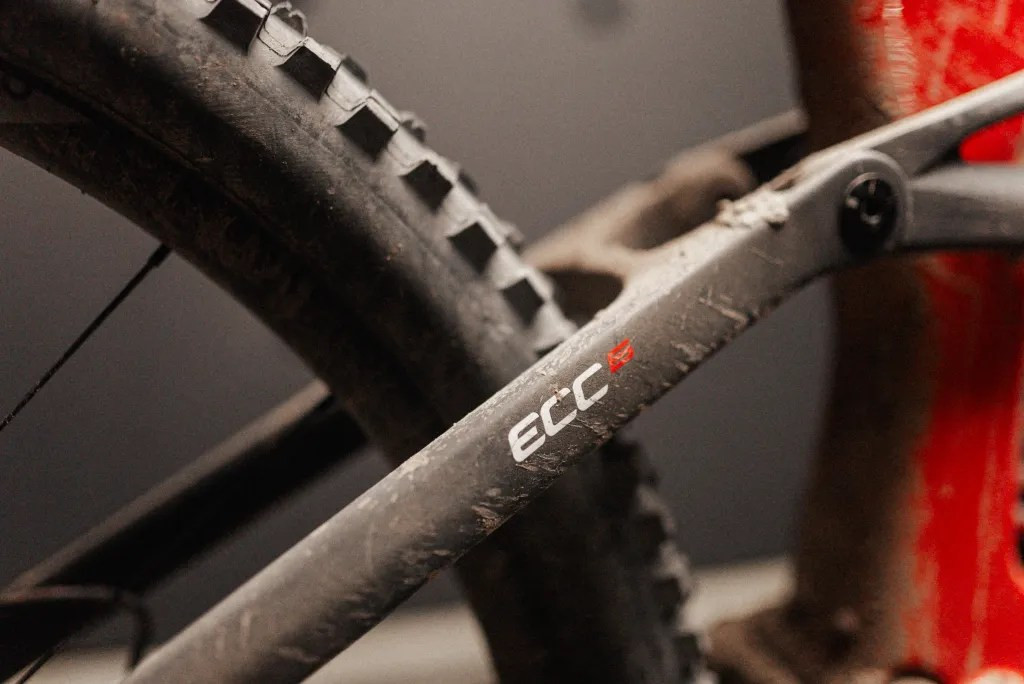 Front view of the Gas Gas ECC6 e-bike displaying its aggressive stance and off-road readiness
Front view of the Gas Gas ECC6 e-bike displaying its aggressive stance and off-road readiness
 Rider's perspective on the Gas Gas ECC6 e-bike cockpit showing handlebar controls and Sram Powertrain interface
Rider's perspective on the Gas Gas ECC6 e-bike cockpit showing handlebar controls and Sram Powertrain interface
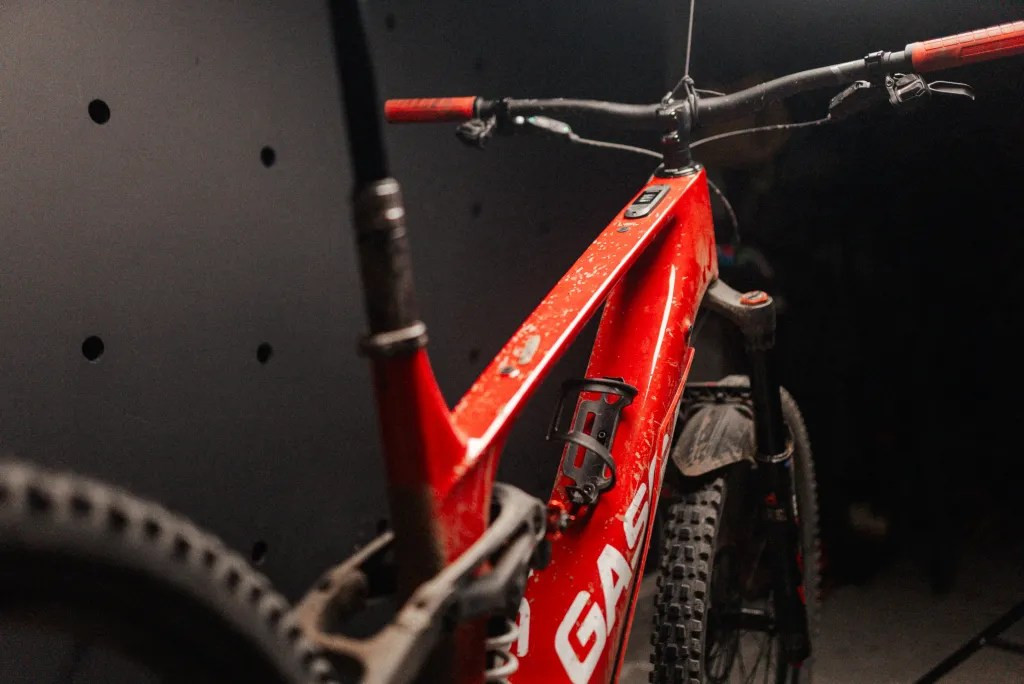 Detailed view of the Gas Gas ECC6 e-bike frame and battery integration showcasing the swappable battery system
Detailed view of the Gas Gas ECC6 e-bike frame and battery integration showcasing the swappable battery system
Gas Gas ECC6 Ride Review
Conquering Climbs with the ECC6
Let’s address the uphill performance of the ECC6. There are notable strengths and minor drawbacks to discuss. First and foremost, the Sram Powertrain system is a standout feature. It delivers ample power, seamless integration, and a user-friendly interface. The simplicity of just two power modes is perfectly adequate for most riders, and the power delivery is smooth and controlled, avoiding any jarring surges. While on flatter terrain, some might perceive it as less potent compared to other systems, it truly shines on steep inclines in lower gears, outperforming competitors when the gradient increases. When tackling extremely steep climbs, the motor maintains consistent power, a characteristic highly valued in eMTBs for conquering challenging trails that would be daunting on a conventional mountain bike. Therefore, the Sram Powertrain earns high marks for its climbing prowess. Regarding battery capacity, the ECC6 features a 630Wh battery, which, while not the largest for a full-power ebike, provides sufficient range for substantial rides. However, for epic rides exceeding 6,000 feet of elevation gain, carrying a spare battery would be advisable.
A quick note on the auto-shift feature: personal preference leans towards manual shifting control. While auto-shift is a significant selling point for riders seeking a simplified riding experience focused solely on pedaling, the ability to manually shift, especially while coasting, is advantageous. It allows for pre-emptive gear changes before sharp climbs or corners, ensuring optimal power delivery when accelerating.
The geometry of the Gas Gas ECC6 is decidedly long. The head tube angle is slack, and the reach, particularly on the large frame, is generous, especially for riders around six feet tall or taller. Combined with 461mm chainstays, the result is a substantial bike. This extended geometry presents both advantages and disadvantages. A key advantage is enhanced climbing capability on very steep terrain. The Sram motor contributes significantly, but the long wheelbase and chainstays are equally crucial. Typically, on eMTBs, climbable limits are often dictated by front wheel lift and maintaining directional control. The longer chainstays effectively shift the rider’s weight distribution forward, mitigating front wheel lift and ensuring better traction. The ECC6 excels in this aspect, ranking among the better bikes for tackling steep ascents.
Conversely, in tight, winding trails, the bike’s length requires more effort to navigate corners. It can feel somewhat cumbersome at times. Fortunately, the suspension platform is not excessively soft, preventing excessive wallowing and bobbing, which would exacerbate handling issues. If the suspension were as plush as some competitors in this category, the ECC6 might feel unwieldy. The suspension offers good support for a 160mm travel bike equipped with a coil shock. While some bob is present, it’s within acceptable limits for an eMTB, and the enhanced traction from a more active suspension platform is beneficial on technical climbs.
 Rider climbing a steep trail on the Gas Gas ECC6 e-bike demonstrating its uphill capabilities
Rider climbing a steep trail on the Gas Gas ECC6 e-bike demonstrating its uphill capabilities
Descending Prowess of the ECC6
The most prominent characteristic of the ECC6 when descending is its remarkable stability and substantial feel. The extended wheelbase truly shines here, providing exceptional “plowability.” This stability, however, comes at the cost of agility. This bike is tailored for riders who favor a direct, point-and-shoot style. It excels at confidently rolling over obstacles like rocks, roots, and any trail debris in its path. While you’ll feel trail features through the suspension, the bike remains composed and unflappable, maintaining its trajectory.
The suspension isn’t overly plush or excessively soft. Typically, eMTBs in the 140-150mm travel range are often preferred due to the “ebike effect.” The unique sprung-to-unsprung weight ratios in ebikes can create a sensation of plusher and deeper suspension travel compared to their pedal bike counterparts. The ECC6 exhibits less of this ebike effect, feeling more akin to a standard 160mm travel bike, which is arguably a positive attribute. Combining very plush suspension with the ECC6’s long wheelbase and rear center could result in a less responsive and somewhat sluggish downhill experience.
The ECC6 truly excels on steeper descents and at higher speeds. It feels less engaging on flat, mellow trails, where it can feel overbiked and cumbersome to handle. Pumping and jumping are not its primary strengths. However, when presented with speed and slope, it comes alive. Handling improves, the bike’s weight becomes less noticeable, and maneuverability increases. In this regard, it shares similarities with the Giant Trance X E+, likely due to their comparable chainstay lengths.
One minor critique is the bike’s noise level, an unusual concern. While minor bike noises are generally tolerable, the ECC6 is on the louder side. Cable management, plastic frame protectors, and the battery contribute to noticeable noise. Stealthily approaching wildlife is unlikely. However, these noise issues are likely addressable with some ingenuity and DIY modifications. It’s worth noting for potential buyers.
 Gas Gas ECC6 e-bike descending a rocky trail showcasing its downhill stability
Gas Gas ECC6 e-bike descending a rocky trail showcasing its downhill stability
 Gas Gas ECC6 e-bike tackling technical terrain on a descent highlighting its enduro capabilities
Gas Gas ECC6 e-bike tackling technical terrain on a descent highlighting its enduro capabilities
 Close-up of the Gas Gas ECC6 e-bike suspension in action during a downhill ride emphasizing its performance
Close-up of the Gas Gas ECC6 e-bike suspension in action during a downhill ride emphasizing its performance
Gas Gas ECC6 Comparisons
Giant Trance X E+ vs Gas Gas ECC6
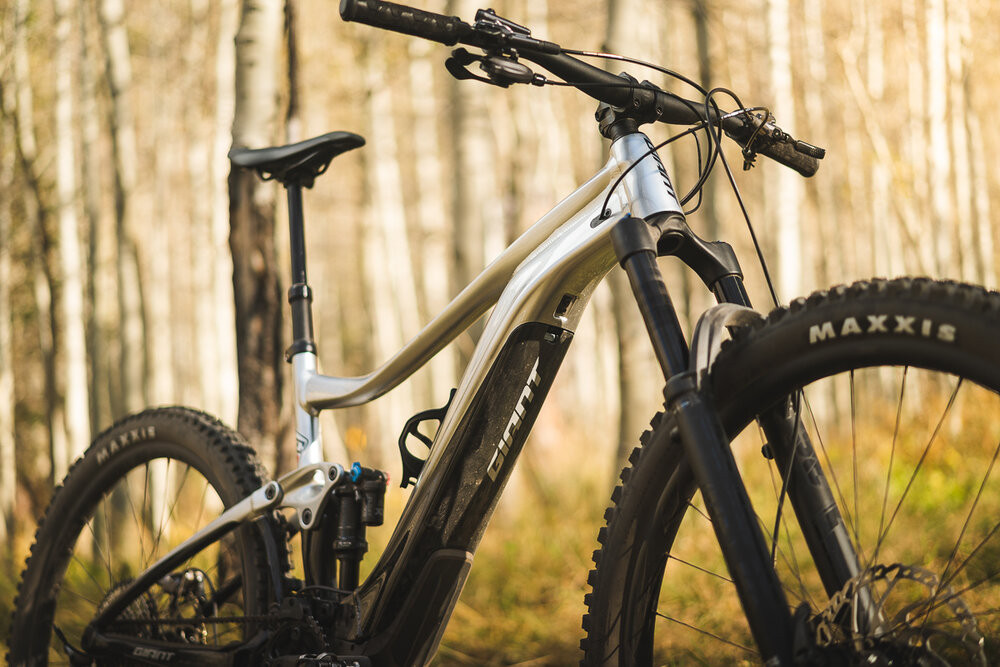 The ECC6 shares handling similarities with the Giant Trance X E+, particularly in stability and length. However, their suspension characteristics diverge significantly. The Trance X E+ offers a plusher, deeper, and more forgiving suspension feel. While both bikes offer similar stability and length, the ECC6’s suspension is tuned for a racier and more performance-oriented ride.
The ECC6 shares handling similarities with the Giant Trance X E+, particularly in stability and length. However, their suspension characteristics diverge significantly. The Trance X E+ offers a plusher, deeper, and more forgiving suspension feel. While both bikes offer similar stability and length, the ECC6’s suspension is tuned for a racier and more performance-oriented ride.
Read the Trance X E+ Review
Transition Repeater vs Gas Gas ECC6
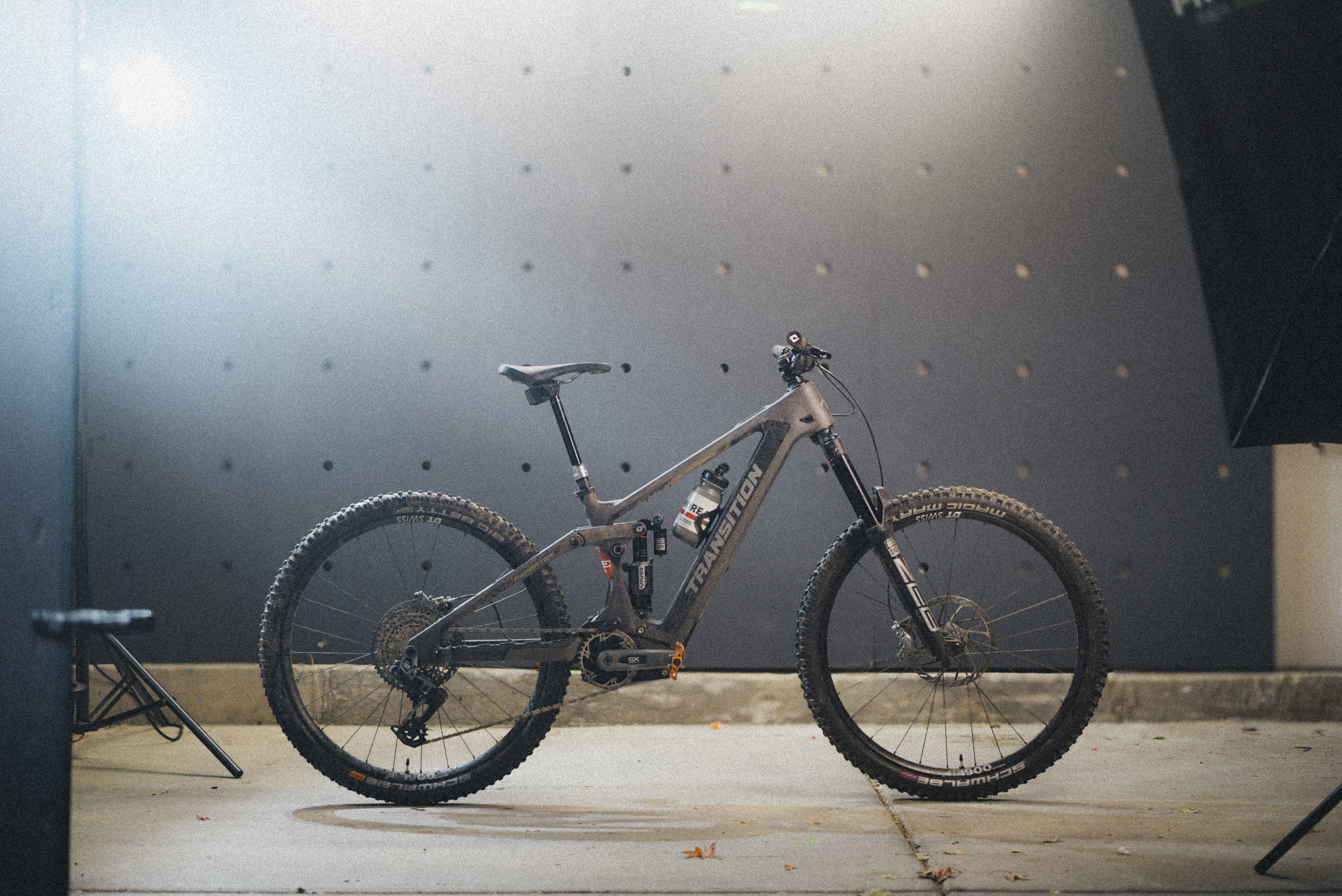 The original Transition Repeater is a relevant comparison point for the ECC6, particularly in suspension feel. However, geometry differences significantly impact their trail manners. The Repeater is more agile and maneuverable, while the ECC6 excels at straight-line stability and confidently tackling obstacles head-on.
The original Transition Repeater is a relevant comparison point for the ECC6, particularly in suspension feel. However, geometry differences significantly impact their trail manners. The Repeater is more agile and maneuverable, while the ECC6 excels at straight-line stability and confidently tackling obstacles head-on.
Read the Repeater Review
Who is the Gas Gas ECC6 E-Bike Designed For?
The Gas Gas ECC6 e-bike appeals to several distinct rider profiles. Firstly, and perhaps most obviously, it attracts riders transitioning from motocross. The Gas Gas brand recognition provides a sense of familiarity and comfort when venturing into mountain biking. For moto enthusiasts exploring eMTBs, the ECC6 offers a bridge, feeling less foreign due to its shared brand heritage with dirt bikes. Imagine if Santa Cruz, a renowned MTB brand, produced a motocross bike – it would similarly resonate with mountain bikers entering the moto world. This is the same principle in reverse.
Secondly, it caters to “wheels on the ground” riders who prioritize stability and straight-line performance over playful, jump-focused riding. If you prefer confidently tackling varied terrain without excessive airtime, the ECC6’s stability will be appreciated. It’s built for business and will confidently roll over almost any trail obstacle.
Thirdly, the ECC6 appeals to riders who appreciate high-end, top-of-the-line components. It is equipped with premium parts throughout, representing the pinnacle of mountain bike componentry. Moreover, compared to many other high-end eMTBs, the ECC6 presents a slightly more accessible price point.
Lastly, it’s a bike for tinkerers. The suspension, with its extensive adjustability, and the frame protection elements offer ample opportunity for customization and personalization in the garage. Whether you enjoy fine-tuning suspension settings or customizing aesthetics, the ECC6 provides scope for tinkering. For others, like myself, the focus remains purely on riding and enjoying the trail.
 Rider on the Gas Gas ECC6 e-bike on a scenic trail emphasizing the enjoyment of riding
Rider on the Gas Gas ECC6 e-bike on a scenic trail emphasizing the enjoyment of riding
That concludes this review. See you on the trails.
Share this:
Like this:
Like Loading…
